Usually when scientists do research, they go into the field, take samples, then bring them back to the lab. University of North Carolina at Chapel Hill research engineer Howard Mendlovitz, working with Professor Chris Martens wants to reverse that.
“I want to take the lab to the field,” he said. “I prefer doing all of my work on the front end, so that all I bring back from the field is data.”
Howard is an engineer by training, and came by marine sciences by happenstance. “I first got involved after Chris Martens at UNC reached out and requested help designing equipment for a seafloor experiment. 25 years later, I’m out here on the R/V Falkor, hunting bubbles with all of you,” he laughed.
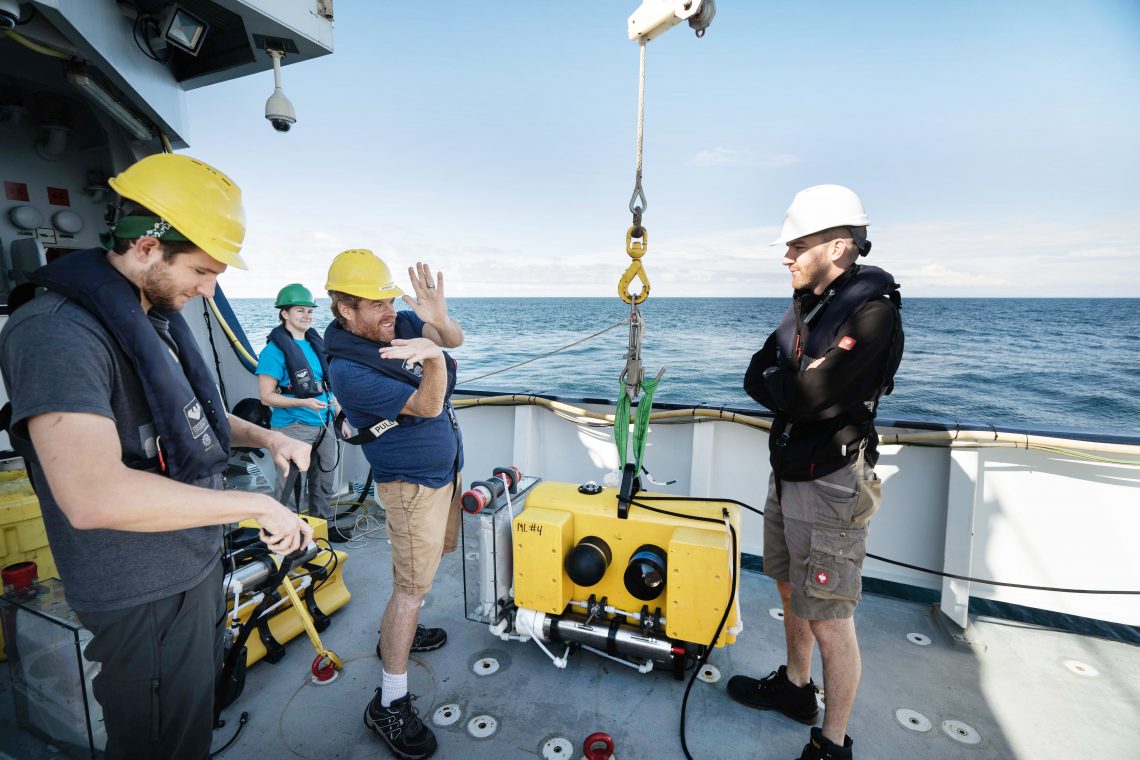
Placing the Landers
After a morning of delicate maneuvering with ROV SuBastian, four trunk-sized landers have been placed precisely to Howard’s satisfaction.
“It’s much easier with a ROV: you get to choose exactly where you want to put them,” he said. “We’ve worked out a launch system without ROVs that involves moving the boat to as precise a location as we can, then deploying the landers over the side. We then use the ROV to carefully place them at selected sites, which makes it much easier.”
Howard has been looking for areas with high methane concentrations in the bottom water, which the seeps all over this margin provide. But the concentration can not be too low.
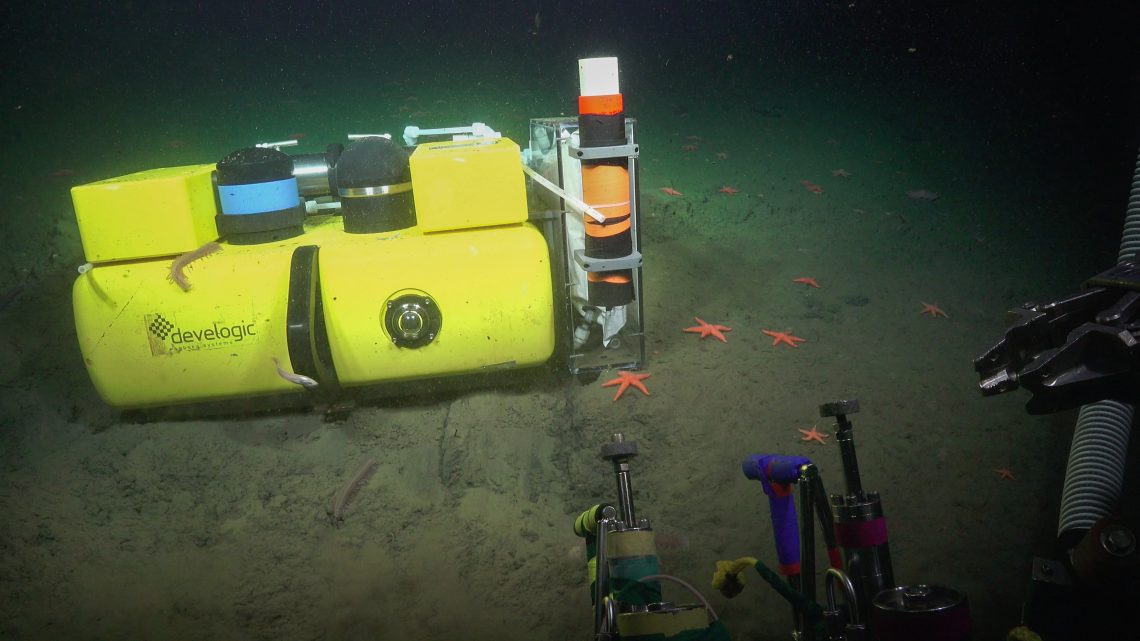
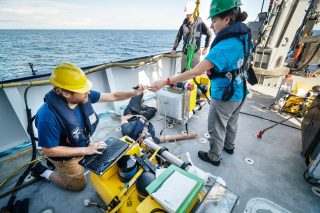
“If you have too little methane, then you can’t run the experiment. If you have too much, the sensors get overwhelmed,” said University of North Carolina Marine Sciences graduate student Adam Rok. And Adam would know. Despite his focus being in biological sciences, he and Howard have worked closely on the design and engineering of the equipment they are using.
“The best part about designing your own lab equipment is that you set your own parameters,” he said. Howard agrees: “Yeah, no one gets through our program by just taking samples. You have to get into the tech side of science too.”
Both First and Latest
Howard and Adam are here to run an experiment on how efficiently microorganisms (microbes) in the ocean water above the seeps consume methane. They want to see how much of the seeping methane the microbes “eat” and how fast they are doing it. It is an experiment that has both been done before, and never been done before.
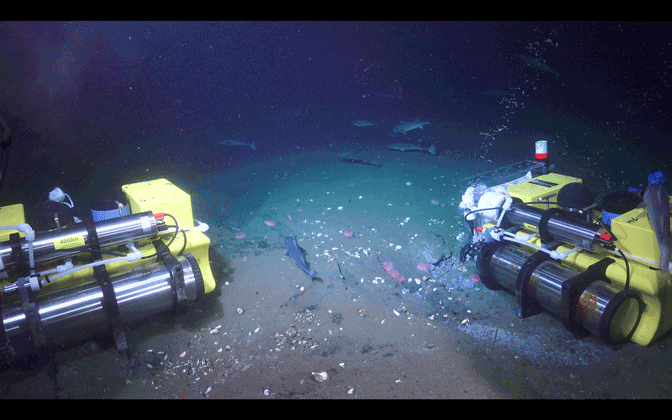
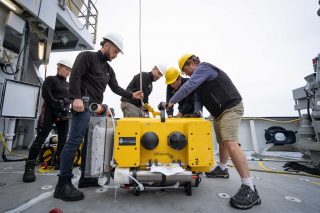
“We’re following up on experiments that have been done in labs on ships and back on shore but never underwater. Scientists have gotten near-bottom water grab samples from just above the ocean floor, then taken them into the lab, where they incubate the samples and track the progress of the microbes as they consume the methane,” said Adam. “They’re called grab samples, because that’s what you do—you grab a water sample then you bring it up to start the work,” Howard clarified.
Adam and Howard would prefer to keep their samples right at the seafloor in order to do what scientists call an “in situ” experiment.
“This part has never been done before, to my knowledge,” Howard said. “We’re going to run a similar experiment, but underwater where the methane-consuming microbes live—as close to in situ as you can get. By doing the experiments in incubation bags (“i-Bags”) on board landers at the seafloor, we will keep the microbes at the same pressure and temperature conditions that they are accustomed to.”
The in situ experiments combine the lander technology that Chris Martens’ group has developed with the proof-of-concept experiments that collaborator John Kessler of the University of Rochester has conducted using shipboard techniques during previous cruises in the Gulf of Mexico.
Running the Experiment Onsite and In Situ
Now that the landers are in place at the seafloor, it is time to get started. “Once the landers are situated on the seafloor where we want them, we open the nozzles and flush the i-Bags, then fill them with the bottom waters immediately above the methane seeps,” Howard explains. “We also take background measurements of waters before we start the lander incubations, so that we have the initial conditions in the water.”
Howard needs the background measurements because if all goes according to plan, there will soon be differences between the chemistry of the water in the lander’s incubation bags and the surrounding ocean.
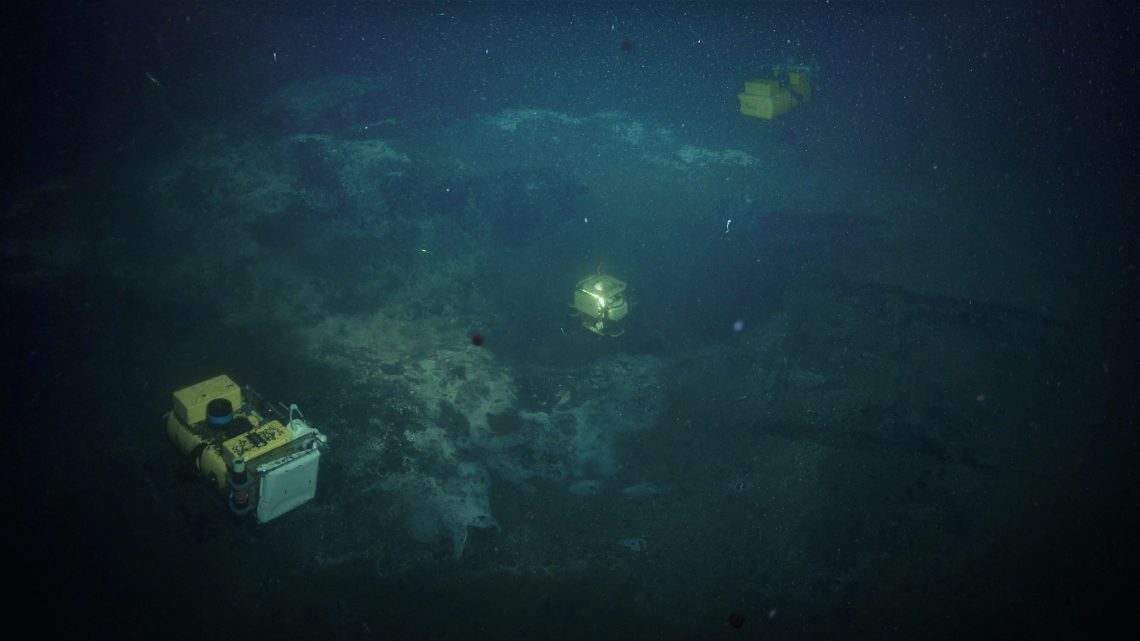
“Basically, we’re expecting that microbial consumption will cause the levels of methane and oxygen to start dropping in the water captured by the lander’s closed i-Bag system,” Howard said.
The lander has precise sensors that are capable of detecting even the tiniest changes in methane and oxygen concentrations in the water that the lander captures. When the amounts of methane and oxygen begin to drop, the lander records that information in its memory banks and also transmits it to the surface so that we can find out how the experiment is proceeding without sending down the ROV.
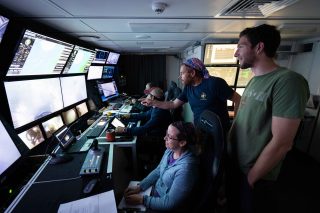
So why will the concentrations of methane and oxygen be falling in the water sample collected by the lander?
“Microbes in the water column will eat the methane, using up oxygen in the process,” Adam said. “The process is called aerobic oxidation of methane, and it is a critical factor in destroying methane that reaches the water column from these seeps. The limiting factor for the microbes in environments like this one is how much oxygen they have. In the ocean, the water cycles the dissolved oxygen around, so the microbes are constantly getting a new supply. But once we close the landers’ nozzles, that’s it— all the oxygen the microbes will get is in the incubation system – the i-Bag.”
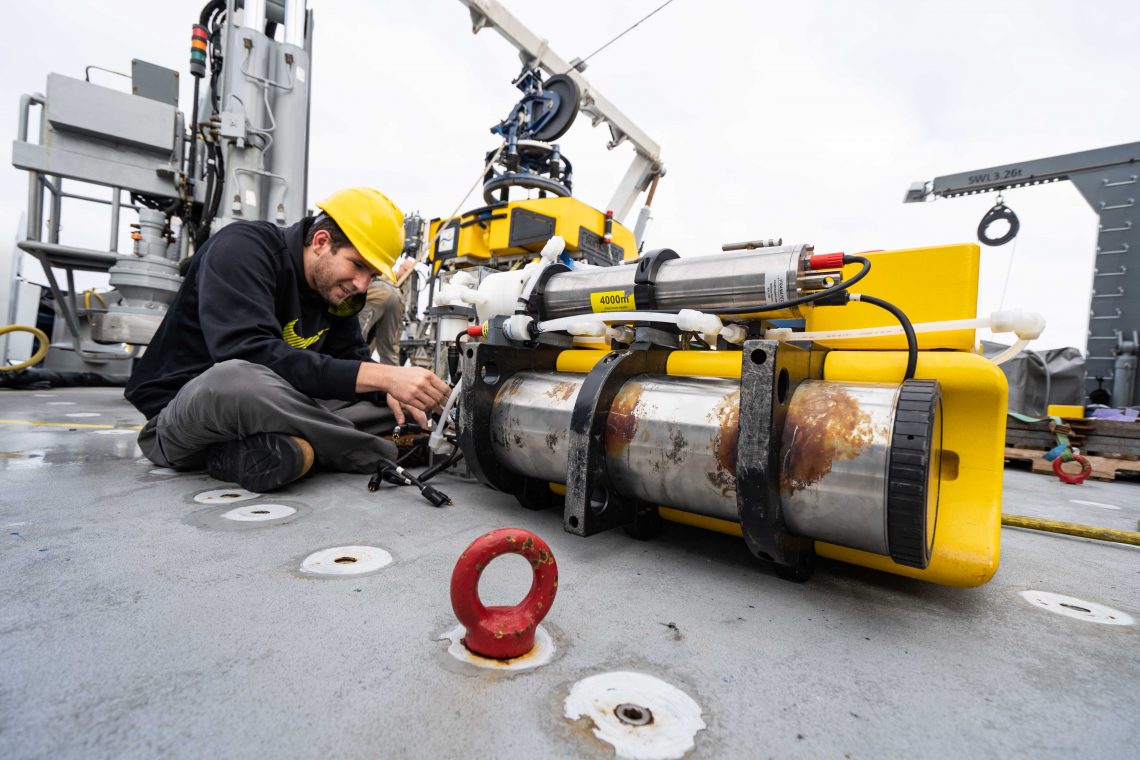
Howard and Adam will run the experiment as long as it takes to exhaust all the oxygen in the water. In addition, they will be able to pair the data they are collecting along with the bubble information that Jens and Tim from GEOMAR are gathering with their multibeam scanner and Bubble box.
The bubble information that Jens is gathering will provide estimates of how much gas is moving through the system. Since most of the gas is methane, it is the supply side of the operation. By pairing the supply side with the rate that methane is consumed by the bacteria, we can begin to understand how much methane is potentially consumed near the seafloor over broader scales.
Bringing the Lab to the Field
The fact that previous laboratory and shipboard experiments have been done is useful to Howard and Adam: “Our results will be valuable no matter what the results are,” Howard said. “If we see results similar to the experiments done in the lab, then that shows that previous experiments using grab sampling and shipboard or shore laboratory methods are valid.”
“And if our results are different,” Adam chimes in, “Then it opens the door to figuring out why. Does that mean that doing the analysis the way we’re trying it, in situ at the bottom of the ocean, is crucial to understanding the behavior of these microbes in the environment?”

Either way, it reinforces for Howard what keeps him in this field—fieldwork itself.
“For me, this is the fun part,” he said. “Getting to take my equipment out into the environment, fine-tune it to the conditions that are here, and overcome any challenges that nature throws my way. It is what I love about this work.”

